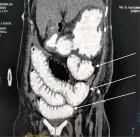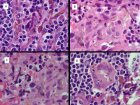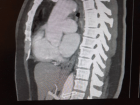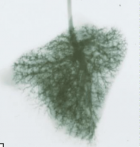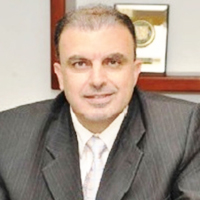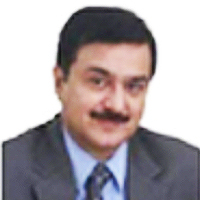Abstract
Research Article
Coronavirus COVID-19 surface properties: Electrical charges status
Luisetto M*, Tarro G, Khaled Edbey, Farhan Ahmad Khan, Yesvi AR, Nili BA, Fiazza C, Mashori GR, President, IMA Academy and Italy
Published: 13 April, 2021 | Volume 4 - Issue 1 | Pages: 016-027
Aim of this work is to analyze the coronavirus viral surface properties related the pattern of electrical features.
This chemical physical property is relevant and crucial to set profile of diffusion, severity of disease, efficacy of therapeutic strategy and in order to search new way to fight COVID-19 and the NEW VARIANT.
The phenomena of immune evasion and the different pattern of efficacy towards variants of some vaccine or some antibodies combination produce the need to verify if considering the electrical feature of viral surface can be a right tool or not.
As result of this research it is possible to submit to the scientist that the viral surface properties and electrical feature can be an element to be considered in various preventive or treatment measure.
The specificity of action of some vaccine or antibodies seem to tell us that also the aspecific methods are useful.
A specific chemico physical factors can influence the electrical charges viral surface behavior.
Hpertonic saline solution, humidity, electrical charge barrier in mask are simply example of the effect.
That can be obtained action on viral surface chemico -physical properties.
Read Full Article HTML DOI: 10.29328/journal.ijcmbt.1001021 Cite this Article Read Full Article PDF
Keywords:
Coronavirus; COVID-19; Envelope; Electrical charge; Severity of disease; Spread; Surface chemical physical properties; New strategy; Specific and aspecific measure
References
- Rakshita K, Chatterjeea S, Bandyopadhyaya D, Sarkarb S. Preprint an effective approach to reduce the penetration potential of sarscov-2 and other viruses by spike protein: surface particle.
- Schoeman D, Fielding BC. Coronavirus envelope protein: current knowledge. Virol J. 2019; 16: 69. PubMed: https://pubmed.ncbi.nlm.nih.gov/31133031/
- Northwestern University Amanda Morris Research exposes new vulnerability for SARS-CoV-2. Electrostatic interactions enhance the spike protein's bond to host cells. 2020.
- Leung WWF, Sun Q. Electrostatic charged nanofiber filter for filtering airborne novel coronavirus (COVID-19) and nano-aerosols. Sep Purif Technol. 2020; 250: 116886. PubMed: https://pubmed.ncbi.nlm.nih.gov/32322159/
- Sholanov K. Electrophysical processes effecting the covid-19 virus before it enters. Organism.
- Li W. Structurally Observed Electrostatic Features of the COVID-19 Coronavirus-Related Experimental. Structures inside Protein Data Bank: A Brief Update.
- Luisetto M. Chemico- physicals properties of coronavirus affecting. Int Invent Sci J. 2021; 5:
- Baron J, El-Chaar G. Hypertonic Saline for the Treatment of Bronchiolitis in Infants and Young Children: A Critical Review of the Literature. J Pediatr Pharmacol Ther. 2016; 21: 7–26. PubMed: https://pubmed.ncbi.nlm.nih.gov/26997926/
- Biktasheva IV. Role of a habitat's air humidity in Covid-19 mortality. Sci Total Environ. 2020; 736: 138763. PubMed: https://pubmed.ncbi.nlm.nih.gov/32492610/
- Jing JLJ, Yi TP, Bose RJC, McCarthy JR, Tharmalingam N, et al. Hand Sanitizers: A Review on Formulation Aspects, Adverse Effects, and Regulations. Int J Environ Res Public Health. 2020; 17: 3326. PubMed: https://pubmed.ncbi.nlm.nih.gov/32403261/
- Pawłowski PH. Charged amino acids may promote coronavirus SARS-CoV-2 fusion with the host cell. AIMS Biophysics. 2021; 8: 111–120. PubMed: http://www.aimspress.com/journal/biophysics
- Al Ahmad M, Mustafa F, Ali LM, Rizvi TA. Virus detection and quantification using electrical parameters. Sci Rep. 2014; 4: 6831. PubMed: https://pubmed.ncbi.nlm.nih.gov/25355078/
- MacCuspie RI, Nuraje N, Lee SY, Runge A, Matsui H. Comparison of Electrical Properties of Viruses Studied by AC Capacitance Scanning Probe Microscopy. J Am Chem Soc. 2008; 130: 887–891. PubMed: https://pubmed.ncbi.nlm.nih.gov/18092777/
- Kettleson EM, Ramaswami B, Hogan CJ, Jr., Lee MH, Statyukha GA, et al. Airborne Virus Capture and Inactivation by an Electrostatic Particle Collector. Environ Sci Technol. 2009; 43: 5940–5946. PubMed: https://pubmed.ncbi.nlm.nih.gov/19731701/
- Scheller C, Krebs F, Minkner R, Astne I, Gil‐Moles M, et al. Physicochemical properties of SARS‐CoV‐2 for drug targeting, virus inactivation and attenuation, vaccine formulation and quality control. 2020.
- Hagbom M, Nordgren J, Nybom R, Hedlund KO, Wigzell H, et al. Ionizing air affects influenza virus infectivity and prevents airborne-transmission. Sci Rep. 2015; 5: 11431.
- Xie Y, Karki CB, Du D, Li H, Wang J, et al. Spike Proteins of SARS-CoV and SARS-CoV-2 Utilize Different Mechanisms to Bind with Human ACE2. Front Mol Biosci. 2020; 7: 591873. PubMed: https://www.ncbi.nlm.nih.gov/pmc/articles/PMC7755986/
- Wang ZY, Li XD, Sun AL, Fu XQ. Efficacy of 3% hypertonic saline in bronchiolitis: A meta-analysis. Exp Ther Med. 2019; 18: 1338–1344. PubMed: https://pubmed.ncbi.nlm.nih.gov/31384334/
- Schaldach CM, Bourcier WL, Shaw HF, Viani BE, Wilson WD. The influence of ionic strength on the interaction of viruses with charged surfaces under environmental conditions. J Colloid Interface Sci. 2006; 294: 1-10. PubMed: https://pubmed.ncbi.nlm.nih.gov/16083898/
- Rafael RG. Machado F, Glaser T, Araujo DB, Petiz LL, et al. Hypertonic saline solution inhibits SARS-CoV-2 in vitro assay.
- Rakshit K. An Effective Approach to Reduce the Penetration Potential of SARS-CoV-2 and other Viruses by Spike Protein; AIJR Preprints. 2020.
- Morton SP, Phillips JL. Computational Electrostatics Predict Variations in SARS-CoV-2 Spike and Human ACE2 Interactions. BioRxiv. 2020
Figures:

Figure 1

Figure 2
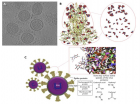
Figure 3

Figure 4

Figure 5
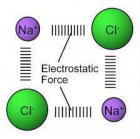
Figure 6
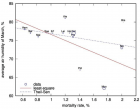
Figure 7

Figure 8

Figure 9

Figure 10

Figure 11

Figure 12
Similar Articles
-
Estimating global case fatality rate of coronavirus disease 2019 (COVID-19) pandemicShyamapada Mandal*,Manisha Mandal. Estimating global case fatality rate of coronavirus disease 2019 (COVID-19) pandemic. . 2020 doi: 10.29328/journal.ijcmbt.1001014; 3: 036-039
-
The clinicopathological correlates of Cystoisosporiasis in immunocompetent, immunocompromised and HIV-infected/AIDS patients, but neglected in SARS-COV-2/COVID-19 patients?Chrysanthus Chukwuma Sr*. The clinicopathological correlates of Cystoisosporiasis in immunocompetent, immunocompromised and HIV-infected/AIDS patients, but neglected in SARS-COV-2/COVID-19 patients?. . 2021 doi: 10.29328/journal.ijcmbt.1001018; 4: 001-004
-
Explicating the presentations of Acanthamoeba keratitis with special concern in the COVID-19 pandemic ambientChrysanthus Chukwuma Sr*. Explicating the presentations of Acanthamoeba keratitis with special concern in the COVID-19 pandemic ambient. . 2021 doi: 10.29328/journal.ijcmbt.1001020; 4: 010-015
-
Coronavirus COVID-19 surface properties: Electrical charges statusLuisetto M*,Tarro G,Khaled Edbey,Farhan Ahmad Khan,Yesvi AR,Nili BA,Fiazza C,Mashori GR,President, IMA Academy, Italy. Coronavirus COVID-19 surface properties: Electrical charges status. . 2021 doi: 10.29328/journal.ijcmbt.1001021; 4: 016-027
-
Incidence of hepatitis B and hepatitis C in Pediatric ward in 2ed March teaching hospital, Sebha: South of LibyaIdress H Attitalla*,Shaban R Bagar,Marei A Altayar,Abdlmanam Fakron,Hosam B Bahnosy. Incidence of hepatitis B and hepatitis C in Pediatric ward in 2ed March teaching hospital, Sebha: South of Libya. . 2021 doi: 10.29328/journal.ijcmbt.1001022; 4: 028-031
Recently Viewed
-
Do Fishes Hallucinate Human Folks?Dinesh R*,Sherry Abraham,Kathiresan K,Susitharan V,Jeyapavithran C,Paul Nathaniel T,Siva Ganesh P. Do Fishes Hallucinate Human Folks?. Arch Food Nutr Sci. 2017: doi: 10.29328/journal.afns.1001003; 1: 020-023
-
Assessment of Redox Patterns at the Transcriptional and Systemic Levels in Newly Diagnosed Acute LeukemiaAna Carolina Agüero Aguilera, María Eugenia Mónaco, Sandra Lazarte, Emilse Ledesma Achem, Natalia Sofía Álvarez Asensio, Magdalena María Terán, Blanca Alicia Issé, Marcela Medina, Cecilia Haro*. Assessment of Redox Patterns at the Transcriptional and Systemic Levels in Newly Diagnosed Acute Leukemia. J Hematol Clin Res. 2024: doi: 10.29328/journal.jhcr.1001029; 8: 017-023
-
Assessment of Indigenous Knowledge on Using of Traditional Medicinal Plants to Cure Human Diseases in South Omo Zone Baka Dawla Ari District, Kure and Bitsmal South EthiopiaGizaw Bejigo*. Assessment of Indigenous Knowledge on Using of Traditional Medicinal Plants to Cure Human Diseases in South Omo Zone Baka Dawla Ari District, Kure and Bitsmal South Ethiopia. J Plant Sci Phytopathol. 2024: doi: 10.29328/journal.jpsp.1001132; 8: 048-054
-
Nanoencapsulated Extracts from Leaves of Bauhinia forficata Link: In vitro Antioxidant, Toxicogenetic, and Hypoglycemic Activity Effects in Streptozotocin-induced Diabetic MiceBárbara Verônica Cardoso de Souza, Alessandra Braga Ribeiro*, Rita de Cássia Meneses Oliveira, Julianne Viana Freire Portela, Ana Amélia de Carvalho Melo Cavalcante, Esmeralda Maria Lustosa Barros, Luís Felipe Lima Matos, Tarsia Giabardo Alves, Maria. Nanoencapsulated Extracts from Leaves of Bauhinia forficata Link: In vitro Antioxidant, Toxicogenetic, and Hypoglycemic Activity Effects in Streptozotocin-induced Diabetic Mice. Arch Pharm Pharma Sci. 2024: doi: 10.29328/journal.apps.1001063; 8: 100-115
-
GELS as Pharmaceutical Form in Hospital Galenic Practice: Chemico-physical and Pharmaceutical AspectsLuisetto M*,Edbey Kaled,Mashori GR,Ferraiuolo A,Fiazza C,Cabianca L,Latyschev OY. GELS as Pharmaceutical Form in Hospital Galenic Practice: Chemico-physical and Pharmaceutical Aspects. Arch Surg Clin Res. 2025: doi: 10.29328/journal.ascr.1001084; 9: 001-007
Most Viewed
-
Evaluation of Biostimulants Based on Recovered Protein Hydrolysates from Animal By-products as Plant Growth EnhancersH Pérez-Aguilar*, M Lacruz-Asaro, F Arán-Ais. Evaluation of Biostimulants Based on Recovered Protein Hydrolysates from Animal By-products as Plant Growth Enhancers. J Plant Sci Phytopathol. 2023 doi: 10.29328/journal.jpsp.1001104; 7: 042-047
-
Sinonasal Myxoma Extending into the Orbit in a 4-Year Old: A Case PresentationJulian A Purrinos*, Ramzi Younis. Sinonasal Myxoma Extending into the Orbit in a 4-Year Old: A Case Presentation. Arch Case Rep. 2024 doi: 10.29328/journal.acr.1001099; 8: 075-077
-
Feasibility study of magnetic sensing for detecting single-neuron action potentialsDenis Tonini,Kai Wu,Renata Saha,Jian-Ping Wang*. Feasibility study of magnetic sensing for detecting single-neuron action potentials. Ann Biomed Sci Eng. 2022 doi: 10.29328/journal.abse.1001018; 6: 019-029
-
Pediatric Dysgerminoma: Unveiling a Rare Ovarian TumorFaten Limaiem*, Khalil Saffar, Ahmed Halouani. Pediatric Dysgerminoma: Unveiling a Rare Ovarian Tumor. Arch Case Rep. 2024 doi: 10.29328/journal.acr.1001087; 8: 010-013
-
Physical activity can change the physiological and psychological circumstances during COVID-19 pandemic: A narrative reviewKhashayar Maroufi*. Physical activity can change the physiological and psychological circumstances during COVID-19 pandemic: A narrative review. J Sports Med Ther. 2021 doi: 10.29328/journal.jsmt.1001051; 6: 001-007

HSPI: We're glad you're here. Please click "create a new Query" if you are a new visitor to our website and need further information from us.
If you are already a member of our network and need to keep track of any developments regarding a question you have already submitted, click "take me to my Query."






